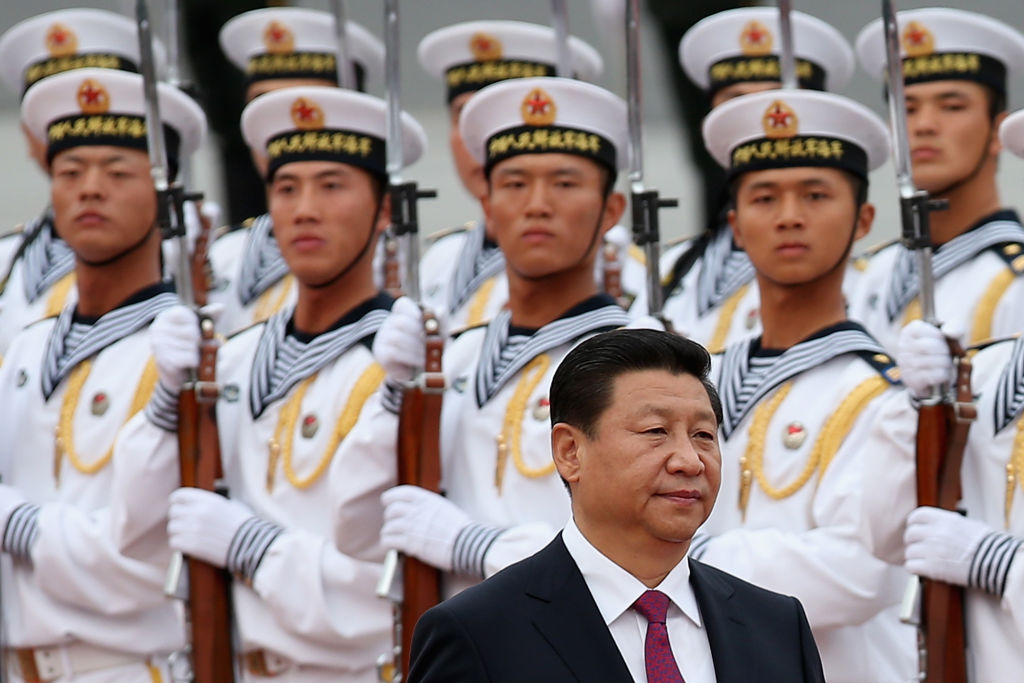
The state of deterrence against China in the Indo-Pacific is constantly adapting to the evolving threat Beijing poses to the United States and its allies on multiple fronts. But a growing number of US military service members warn that deterrence is unravelling.
The Houthi attacks targeting international shipping in the Red Sea and the Gulf of Aden show that the status quo is cracking, fast.
Perspectives from individuals actively engaged in deterrence operations can help shape effective policy. Such insights were gained in conversations between ASPI DC analysts and officers across the services at the Naval Postgraduate School in Monterey Bay, California. These ‘deterrence from the deck’ discussions demonstrated a multifaceted analysis of some of the key political and military issues needed to inform policy to build and sustain deterrence. The emergence of security compacts such as AUKUS took on significant importance. It became clear from our interactions that there were substantial gaps in policy and in public discourse on the purpose of AUKUS and deterrence aims in the Indo-Pacific.
It is critically important to bridge these gaps to garner public support and safeguard the global system that has come under attack.
AUKUS serves two essential purposes. The first is that it offers the opportunity to act cohesively to shape the strategic environment in the Indo-Pacific. Although the headlines for AUKUS are dominated by nuclear-powered submarines, the agreement presents an opportunity to articulate and implement an overarching strategy to build deterrence that could alter Beijing’s cost-benefit calculus and restrain its aggressive behaviour. Responding to China’s threat is necessary though that will not necessarily restore deterrence. However, applying an overarching strategic effort possibly will.
The second AUKUS purpose is the opportunity it provides to accelerate, amplify, and deepen integration, collaboration and interoperability across the allied militaries, technology industrial bases, and supply chain networks to shape the Indo-Pacific strategic environment.
This level of effort is unlikely to be achievable via a piecemeal approach. AUKUS presents the strategic rationale and glue to underscore its purpose, to build deterrence in the Indo-Pacific and to deflect China’s goal of shaping the environment to suit its strategic vision of sovereign subservience. Consequently, the strategic value of AUKUS lies not merely in advancing military capabilities, but in building a new strategic environment that makes it increasingly costly for China to get what it wants by shoring up allies and their capacity to maintain a strategic presence in the Indo-Pacific.
At the political level, there was no doubt that China had to be deterred from shaping the Indo-Pacific to suit its strategic priorities. But a common theme was the ambiguity regarding US and allied deterrence objectives, and a focus on the need to prioritise which People’s Republic of China (PRC) activities to deter. Provocative actions by the PRC including its illegal territorial claims, airspace violations, construction and militarisation of artificial islands, establishment of administrative structures to exert political pressure, and deployment of militia vessels to gradually cement its presence in contested waters, were key areas of concern. However, deterring these coercive ‘grey zone’ activities, which occur below the threshold of kinetic warfare, requires a different approach to how US allies and partners challenge Beijing’s territorial claims over Taiwan, Japan’s Senkaku islands, or India’s state of Arunachal Pradesh.
China’s moves are beyond a gradual accumulation of small salami-slicing actions that add up to a significant strategic change. A more accurate way of characterising China’s behaviour is that it reflects a revisionist surge strategy that is multipronged, accelerating, and designed to overwhelm and disrupt the strategic environment to help it ultimately become the preponderant power. This strategic challenge is not one that the US can confront alone but it can be counterbalanced through a collective effort involving allies and partners. A joint effort is needed to push back against China’s goal to assert dominance and reshape the Indo-Pacific strategic environment to align with its interests.
Although US policymakers are increasingly cognisant of China’s multidomain coercive toolkit, there’s an absence of clear political messaging that articulates why safeguarding the Indo-Pacific from Chinese influence is essential for both US and global strategic interests. Making the case for maintaining mare liberum, the free sea, and demonstrating the political will to build and sustain deterrence is vital to reassure allies and partners and to temper China’s revisionist activities.
Articulating this case is fundamentally important given that China is in the strategic competition for the long haul and its geographic location gives it significant advantages over the US. This geographic reality, as well as the politicisation of aid to Ukraine in Washington and the withdrawal from Afghanistan, has created the impression in Beijing that the US lacks the political will to stay the course. Even if this perception among Beijing’s US watchers is inaccurate, it nonetheless acts to the detriment of US credibility and deterrence in the Indo-Pacific, which encourages China to pursue its revisionist surge strategy with greater vigour.
To be clear, none of the service members we spoke with advocated for a conflict with China. Instead, their argument was that to deter China, the US and its allies and partners must engage in a range of activities that collectively act as guardrails to arrest escalation dynamics from boiling over to a hot war. These activities include military and security compacts such as AUKUS and building foreign and domestic supply chains and ensuring their resilience. As China’s revisionist surge strategy is advancing its agenda, the US-led security architecture needs to articulate and implement a cohesive response that contests China’s perception of extended sovereignty and its strategic vision of exacting compliance from neighbouring states and peoples in the Indo-Pacific.

